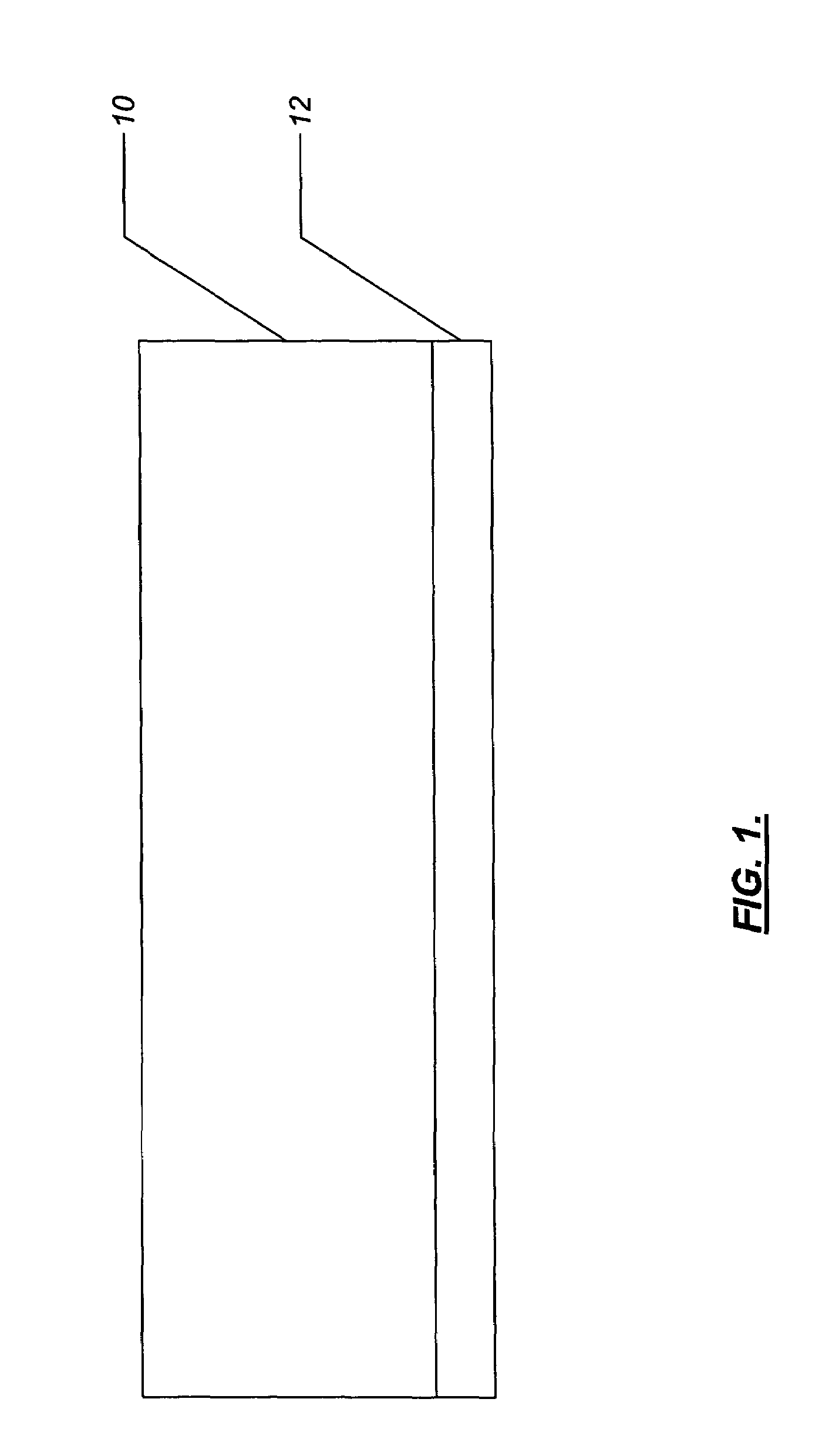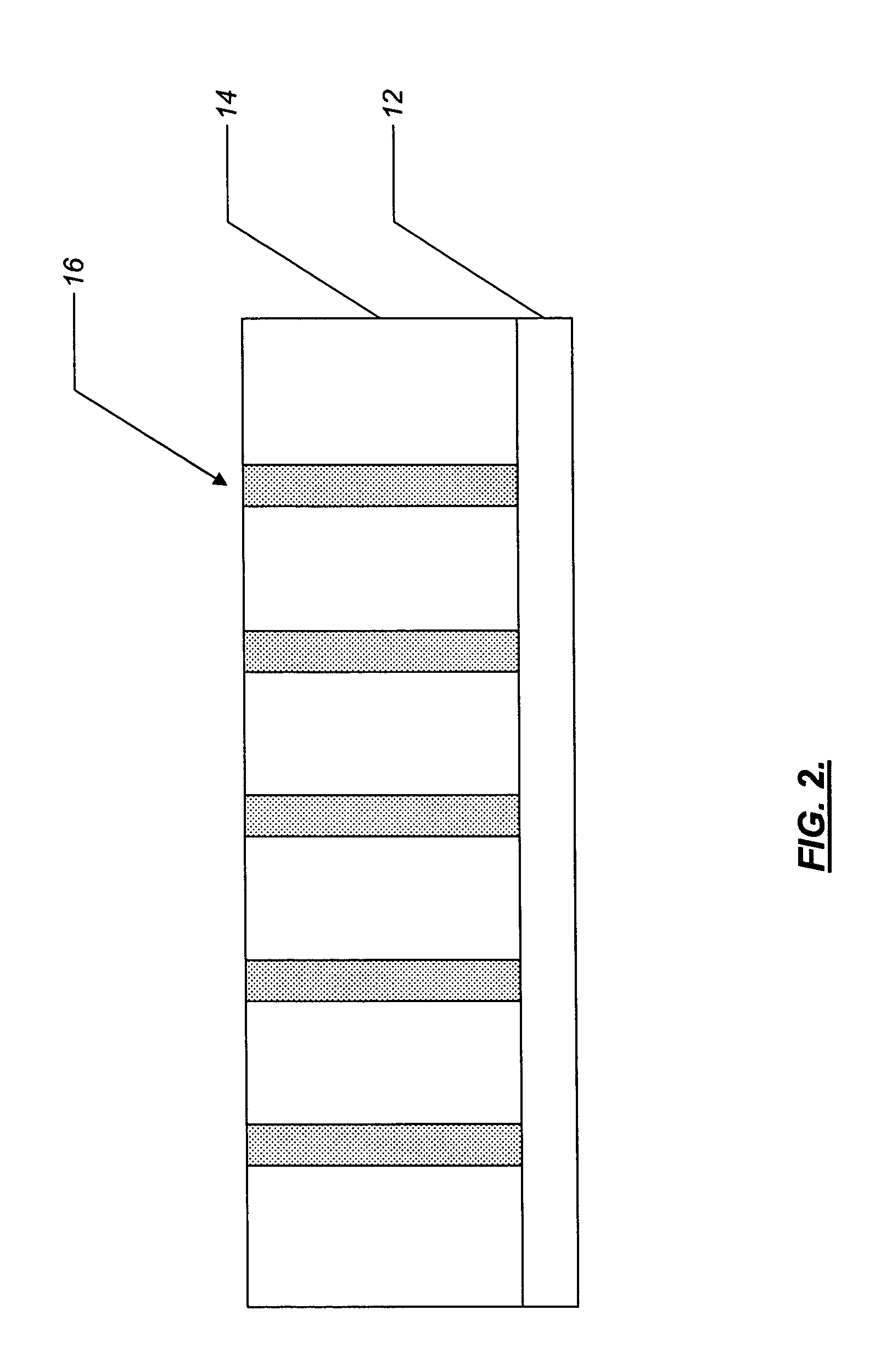Self-aligned gated rod field emission device and associated method of fabrication
a gated rod and field emission technology, which is applied in the manufacture of electric discharge tubes/lamps, discharge tubes luminescnet screens, electrode systems, etc., can solve the problems of limiting the operation life of low pressure gas discharge lighting and fluorescent lighting, reducing the power consumption/disassembly, and reducing the efficiency of the device, so as to achieve low power consumption/disassembly and assembly cost, the effect of small emitter tip density and simple and efficien
- Summary
- Abstract
- Description
- Claims
- Application Information
AI Technical Summary
Benefits of technology
Problems solved by technology
Method used
Image
Examples
Embodiment Construction
[0020]Referring to FIG. 1, in one embodiment, the method for fabricating the self-aligned gated rod field emission device of the present invention first includes depositing a metal layer 10, such as a layer of Al, Ti, Mg, W, Zn, Zr, Ta, Nb or the like, on the surface of a semiconductor layer 12, such as a layer of Si or the like, the semiconductor layer 12 forming a substrate. Preferably, the metal layer 10 has a thickness of between about 0.1 microns and about 50 microns and the semiconductor layer 12 has a thickness of between about 1 micron and about 550 microns. The metal layer 10 is deposited on the surface of the semiconductor layer 12 using, for example, thermal evaporation, electron-beam evaporation, sputtering or the like. It should be noted that Al is the preferred metal layer 10 because it may be anodically oxidized to form a nanoporous structure. There is some experimental evidence that Ti may also be anodically oxidized to form a nanoporous structure. Mg, W, Zn, Zr, Ta ...
PUM
 Login to View More
Login to View More Abstract
Description
Claims
Application Information
 Login to View More
Login to View More - R&D
- Intellectual Property
- Life Sciences
- Materials
- Tech Scout
- Unparalleled Data Quality
- Higher Quality Content
- 60% Fewer Hallucinations
Browse by: Latest US Patents, China's latest patents, Technical Efficacy Thesaurus, Application Domain, Technology Topic, Popular Technical Reports.
© 2025 PatSnap. All rights reserved.Legal|Privacy policy|Modern Slavery Act Transparency Statement|Sitemap|About US| Contact US: help@patsnap.com



